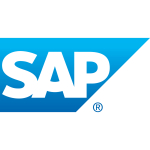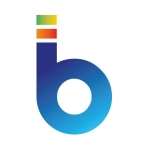I am a Power BI technical senior developer and consultant and I use Power BI to provide solutions for my clients.
Everything that's in M Query and DAX is the heart of Power BI because with these tools you can make up for a lot of other missing features. When I say "missing features", I mean it in the sense that, even if you don't have a direct feature to do something, there are quite a few workarounds that you can figure out with DAX and M Query to make different situations work. I think these two are really the soul of the tool because they make a lot of impossible things possible.
There's a lot of room for improvement because Power BI is a new tool and hasn't really been in the market for that long, especially considering alternative tools such as MicroStrategy or Tableau which have been around for more than a decade. Because Power BI is younger than those tools, I feel it hasn't reached a certain level of maturity that comes with time and it is lacking in quite a few areas which I'm hoping will be seen to in the future, given how it has been progressing so far with its new releases.
There is no specific area that I have a problem with. It's just that, with whatever feature you come across, every visual has its own formatting and behavior. What you get in one visual for a feature, you don't seem to get in another.
When it comes to the feature's functionality, that's all fine, but, say, for instance, that you want to go ahead and turn off only the sub totals and not the grand totals. This might not be immediately possible, especially if you are working in a project where your technical solution is the backend site which the users don't quite care about. What they care about is what they see and interact with, and the visuals and formatting (and visual settings) at hand are what really matter to them.
This is where I think standardization really needs to come in. Basic stuff like being able to selectively turn on or off only the sub totals or grand totals. There should be certain formatting options which should be standard across every visual. What options you get here, you should also get over there, for example. These are simple things, but many a time it's something the end user takes very seriously. They generally do not care about what's happening in the background with regard to the calculations and everything else.
In essence, the standard visualizations should have features and options in common with one another, even when it comes to other visualization tools such as bar charts and line charts. These are all pretty basic visualization features, and giving them some standard way to be customized will make them as capable and competitive as what other tools allow you to do. Of course, you can do this if you add your own custom visuals from the library, but when it comes to basic default stuff, they should at least be deep enough in terms of standard customization to compete.
Right now it seems like they're trying to add a lot of features, but at the expense of losing out on the essence of the basics. The basics in Power BI should be equally as good as the basics in any other tool, and in this case I believe it to be a problem of adding more depth to certain features. The width, and variety, of features is not a problem for me. Whatever features are already available need to be deep enough to work with comfortably, and I feel this is where Microsoft needs to direct its focus.
I have been in the BI world for about six or seven years now and for the last few years it's all been Power BI for me.
Their support is a little slow in the sense that when I post a question to them, I don't get a response as fast as I'd like. Unless you're a premium user and you've got a dedicated technical support team — that's a different thing.
When it comes the usual Microsoft bugs, they generally don't come up with solutions too quickly. And many a time they don't even have a running solution; some bug fixes will probably only be part of the next release. Even then, however, the new releases are themselves often not terribly stable. Whenever you get a new feature, you almost know that this one's not going to work as perfectly as you would want it to. So you just have to wait for the next one, and that's what it is. It takes a little while to stabilize. This kind of thing, along with their support in general, can probably be sped up a little bit.
I am certified in MicroStrategy and have worked with it for several years. However, most of the business I am getting lately is all Power BI.
In my experience, everybody is switching from either MicroStrategy to Power BI or Tableau to Power BI. I'm hearing and seeing this going on in the market, for some very good reasons. I'm no longer working with MicroStrategy, but not because I don't like it. It's simply that I'm not getting enough work in that area.
Setup is very easy. In Power BI that's one thing you will find across the board when using it. It is very easy in terms of getting something done. Even complex things can be done in a pretty easy way and there's no complex challenge in it.
The pricing is good. It's pretty competitive because I have worked on a few other tools as well, and Power BI is on the cheaper side.
That said, many times people are attracted by its affordable price tag, but then they see that it doesn't do everything they want and they conclude that that was the reason why it was so cheap. There's a problem with this kind of thinking, because even though it might not have everything, the price is still on the cheaper side compared to other analysis products like MicroStrategy. The complete suite of features from MicroStrategy is very costly, but at the same time there's no doubt that it can achieve a lot.
What you get with Power BI is that you start to find that even simple stuff requires a lot of gymnastics to achieve because there's no in-built, straightforward feature for it and you need to come up with a workaround. There are a few too many workarounds needed for my comfort, but otherwise it's a very good tool and it's one of my favorites. The pricing is competitive for a reason.
If you are looking for tabular reporting, then Power BI is not the tool for you. This isn't something that Microsoft speaks much about, and in my experience, if you want to do tabular reporting then there first has to be something in Power BI which can actually take loads of data and print it out on visuals in a tabular way, which is currently lacking. Power BI is really designed for analytical dashboarding and that's what it does best. For tabular reporting, on the other hand, it's better to just get the data exported out into Excel and do the rest there.
I would rate Microsoft PowerBI a seven out of ten.


















